The History of The Wine Glass - A Tale of Exploding Bottles and and Naval Warfare

The Wine Glass: A History of Beautiful Mistakes and Happy Accidents
You'd think something as simple as a wine glass would have a straightforward history. Bowl, stem, base - how complicated could it be?
Turns out, very. The wine glass has survived exploding bottles, weeping glass disease, the Royal Navy's timber crisis, and a century of punitive taxation. It's been withheld by servants, dropped by aristocrats, and fundamentally redesigned by an apprentice who invited his friends round for evening drinking sessions.
This is the story of how we got from medieval Venetian cristallo to the fishbowl-sized Burgundy glasses that intimidate you in restaurants.
Spoiler: most of it was accidental.
In This Guide
Most people assume wine glasses have always looked like they do now - elegant, refined, purpose-built. In reality, the wine glass you'll be drinking from tonight is the product of naval warfare, tax avoidance, literal glass disease, and one man's 1950s house parties.
Let's start at the beginning.
The Venetian Golden Age (And Its Unfortunate Side Effects)
People have been drinking wine from glass vessels since ancient times, but the modern wine glass - the bowl-stem-base design we recognise today - emerged around 1450, in Venice.
In the 15th century, Venice was the glittering epicentre of the glassblowing world. Glassmaker Angelo Barovier had worked out how to purify alkaline sources, which meant Venetian craftsmen could create "cristallo" - a highly sought-after form of clear glass that was essentially the luxury item of its day.
Here's where it gets interesting. When Venetian glassmakers started purifying their raw materials to remove the elements causing discolouration, they accidentally removed some of the things that were actually making the glass durable. Like lime, which acted as a stabiliser.
Whoops.
This meant their beautiful, clear glasses could start deteriorating quite quickly in normal air. The symptoms of this "glass disease" were initially "weeping" - when moisture caused alkali to leach out of the glass - followed by "crizzling," a series of very fine cracks caused by the loss of alkali that eventually caused the glass to fall apart entirely.
So you'd spend a fortune on these gorgeous Venetian glasses, and they'd literally start crying and then disintegrating.
Brilliant product development, that.

Some of these "weeping" goblets still survive in museums today, their surfaces clouded and cracked like old ice.
Enter the English (Via an Unlikely Route)
By the 17th century, Venetian glassmaking techniques had spread across Europe, sometimes through legitimate channels and sometimes through industrial espionage - Venice famously tried to keep its glassmakers captive on the island of Murano to protect trade secrets.
The English, having absorbed these methods, decided to create a glass industry of their own.
Because if there's one thing 17th century England excelled at, it was looking at what someone else is doing and thinking "we could probably do that too, but differently, and better."
Then something unexpected happened that changed glassmaking forever.
The Royal Navy's Timber Crisis
The Royal Navy asked glassmakers to stop cutting down oak trees to fuel their fires. They were depleting the forests of trees needed for shipbuilding, and the Navy quite reasonably felt that defeating the Spanish Armada was more important than wine glasses.
So English glassmakers turned to sea-coal instead - a move born of desperation that turned out to be revolutionary.
Sea-coal burned at much higher temperatures, creating hotter furnaces, which immediately strengthened the glass. Problem solved through necessity, which seems to be how most good innovations happen.
The Champagne Connection
This stronger glass also produced stronger bottles, which played a crucial role in the birth of champagne as we know it. French winemakers in Champagne had been dealing with a volatile problem - literally. Wine undergoing secondary fermentation was producing carbon dioxide that shattered their bottles with alarming regularity. Exploding bottles in wine cellars were a genuine occupational hazard, sometimes causing chain reactions that destroyed entire vintages.

But when the English began importing French wine and re-bottling it in their tougher, coal-fired bottles in the 1660s and 1670s, suddenly the sparkle could be contained. The pressure that had been destroying French bottles was now captured safely in English glass. The French, realising what the English had accidentally achieved, eventually adopted the stronger bottle designs themselves.
So champagne as we know it - deliberately sparkling, reliably bottled, celebrated rather than feared - exists partly because the Royal Navy needed more ships.
⚓ Happy Accident: Sometimes world-changing innovations come from the most unlikely places. The Royal Navy's timber shortage gave us both stronger wine glasses and reliable champagne bottles.
The Lead Revolution
In the 1670s, George Ravenscroft was commissioned by the Glass Sellers' Company to develop a superior English glass that could rival Venetian imports.
His solution? Add lead oxide to the mix, creating what he called "glass of lead."
This innovation solved two problems at once. First, it made the glass stronger and more durable - finally addressing the crizzling issues that had plagued both Venetian and early English glass. Second, it gave the glass the lustrous look of crystal.
Lead oxide affects how light passes through the glass - it causes the different colours in light to travel at different speeds, a process known as dispersion. This is what gives lead crystal that distinctive sparkle and weight. The material became so successful that English lead crystal glassware dominated luxury markets for the next two centuries.
Lead crystal became synonymous with elegance — it caught the light like no other material, the dining tables of Europe glittering in its glow.
It's also why you shouldn't store wine in lead crystal decanters for more than a few days - the lead can leach into the wine - but that's a conversation for another day.
The Tax That Kept Glasses Small
Wine glasses in the 1700s and early 1800s were notably small. Some held barely 60 millilitres — about two mouthfuls by modern standards. One reason? A huge tax on glass that existed for a century, from the 1740s to 1845.
The government had decided that glass was a luxury item (which it was) and therefore a perfect target for taxation (which it became). The tax was calculated by weight, so glassmakers responded by making smaller, lighter glasses - less glass, less tax.
When that financial pressure was finally removed in 1845, wine glasses immediately began to grow. It's remarkable how quickly things expand once you stop taxing them into submission.
The Servant Problem
Here's a detail that really brings the class system into focus: throughout much of the 18th century, your wine glass was kept away from you.
Your glass would be brought to you by your footman or valet, who would fill it up for you. You'd drink it down and hand it back to them. Presumably while making meaningful eye contact to assert dominance.
But through the late 1700s and into the 1800s, the wine bottle moved to the dinner table, and so did the glass.
Finally, the ability to top yourself up without being judged by the staff!
Form Meets Function
With glasses now on the table where everyone could see them, there was a desire for more elegant, sophisticated models. Wine glasses got taller and more refined. Stems got longer, with decorative twists and little bulges called "knops."
But the aesthetically pleasing stem had a practical purpose too. Wines should be served at the correct temperature, but they can easily grow too warm with a big, hot hand wrapped around the bowl. Holding a glass by the stem didn't just look elegant - it helped wine remain at its optimal temperature.
Function and fashion, working together for once.
The 1950s Revolution You've Never Heard Of
This is where the story gets properly interesting.
All wine glasses prior to the 1950s were straight-sided.
Every single one.
Whether they were simple goblets, tall flutes, or wide coupes, the sides went straight up or flared outward uniformly. The "egg" shaped design of modern wine glasses - that elegant inward curve at the rim we now associate with proper glassware - didn't exist.
 Then along came "the father of the modern wine glass," Claus Riedel, who was working as an apprentice glassmaker in the 1950s.
Then along came "the father of the modern wine glass," Claus Riedel, who was working as an apprentice glassmaker in the 1950s.
He began experimenting with different bowl shapes and when he invited friends round to drink wine, they used all the experimental designs he'd been working on. Even though they were drinking the same wine, his friends' opinions on its quality were hugely diverse depending on which glass they used.
This led him to suspect that the shape and size of the glass was influencing the taste. And thus, the grape-specific shapes we use today were born. By 1961, Riedel had introduced his first varietal-specific collection, with his first creation, the Sommeliers Burgundy Gran Cru glass, still lauded as a masterpiece of functional art in the Museum of Modern Art today.
Think about that.
The entire concept of varietal-specific glassware - Burgundy glasses, Bordeaux glasses, Port glasses - only emerged in the late 1950s and early 1960s.
Before that, everyone just used whatever straight-sided glass was at hand.
This was not a stylistic whim; it was a functional revolution.
Previously, glasses were primarily decorative vessels and Claus established a new philosophy: the wine glass as a tool.
Claus Riedel quietly rewrote the rules of wine drinking - and most people have never heard of him.
Why Shape Actually Matters
We've all seen people sticking their entire nose inside a fishbowl-sized glass that holds just a tiny puddle of red wine at the bottom. But is the big Burgundy balloon actually helpful, or just theatre?
Turns out, it's helpful.
The shape of the glass affects how much wine gets into your mouth and where it travels across your tongue. Different parts of your palate are more sensitive to different tastes - sweetness registers most strongly at the tip of your tongue, acidity at the sides, bitterness at the back. The shape of the rim directs the wine to specific areas first, fundamentally changing your initial perception of the wine's character.
Different glasses genuinely can make the same wine taste different.
This isn't pretension - it's physics and biology working together. Form and flavour, in perfect partnership.

The Anatomy Lesson
Let's break down what each part actually does:
The Rim
The rim determines where the wine is directed onto your tongue and therefore your brain's initial perception of the taste. A narrower rim focuses the wine to specific parts of your palate. A wider rim spreads it around more.
Also, a thin smooth rim helps the wine flow effortlessly into the drinker's mouth whereas a thicker, rolled rim, like those cheap glasses you get down the pub, creates turbulence as the wine enters the mouth and spreads the wine across more of the tongue.
The Bowl
The bowl holds the wine (obviously), but also controls how much air it gets. Fill it about one-third full, or to where the bowl is at its widest, to maximise the wine's contact with air. Bowls are often tapered to concentrate and direct aromas to your nose. This also lets you swirl the wine around without spilling any onto your shirt, which is a genuine design consideration.
The Stem
The stem is the part you hold. It connects the base and the bowl, but more importantly, it keeps your warm hand away from the wine. This isn't affectation - it's temperature control.
The Base or Foot
The base keeps the wine glass standing. Which sounds obvious, but given how top-heavy some modern wine glasses are, this is doing more work than you'd think.
The Modern Rebellion
One footnote to this story: in recent years, stemless wine glasses have surged in popularity, particularly in casual settings. Purists argue they're heresy - your hand warms the wine, you can't swirl properly, the whole point of centuries of innovation is abandoned.
Others point out they're more practical for everyday use, harder to knock over, easier to store, and fit in the dishwasher. Sometimes convenience trumps tradition, and that's fine too. After all, wine has always been about adaptation - the glass is just catching up.
🍷 The Debate Continues: The evolution of the wine glass isn't finished yet. It's a modern reminder that the wine glass, for all its elegance, has never been sacred — only adaptable.
The Bottom Line
The wine glass has evolved from fragile Venetian cristallo that literally wept and crumbled, through English innovations driven by naval timber shortages, past a century of being kept away from drinkers by servants and squeezed small by taxation, and finally arrived at the varietal-specific designs we use today.
All of this happened largely by accident. Venetian glass disease, the Royal Navy's shipbuilding needs, glass taxation, and one Austrian glassmaker's drinking sessions with friends - none of it was planned.
And yet somehow, we've ended up with glassware that genuinely makes wine taste better.
The wine glass proves something rather lovely: the best designs often come from unrelated problems, happy accidents, and a touch of human curiosity.
So the next time you're holding a proper wine glass - feeling its weight (or lack of it), admiring how the wine looks through it, noticing how the aromas collect in the bowl - remember: you're holding centuries of mistakes, innovations, and weird historical circumstances that somehow combined to create something genuinely wonderful.
And that's worth raising a glass to.

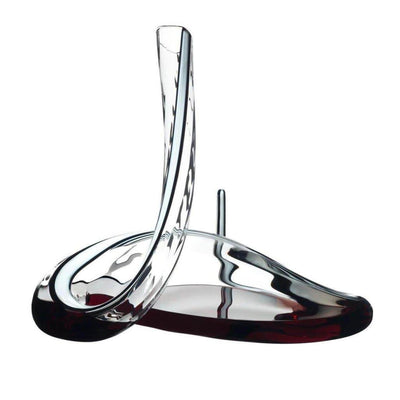
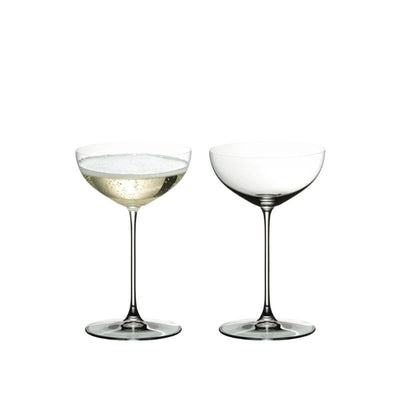
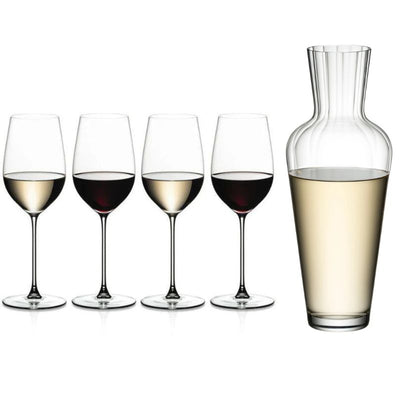
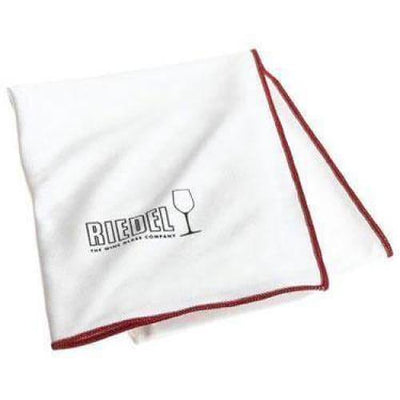















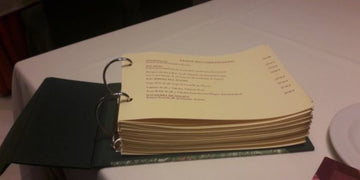


Leave a comment